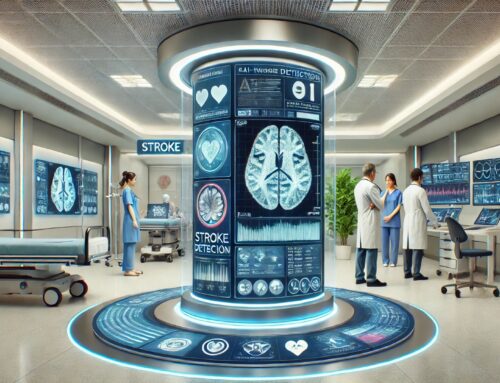In a significant advancement for cardiac care technology, HeartBeam, Inc. has unveiled new study data demonstrating that its AI-powered algorithm, HeartBeam AI, combined with vectorcardiography (VCG), surpasses a panel of heart rhythm experts in detecting atrial flutter. The findings, presented by Dr. Joshua M. Lampert at the Heart Rhythm Society annual meeting in Boston, highlight the potential of AI to transform cardiac diagnostics.
 The study assessed HeartBeam AI’s performance on a dataset of 173 vector cardiograms (VCGs), single-lead ECGs, and 12-lead ECGs. For comparison, a panel of three electrophysiologists (EP panel) reviewed the same data. Atrial flutter, a common arrhythmia that significantly increases stroke risk, was the focus of this analysis.
The study assessed HeartBeam AI’s performance on a dataset of 173 vector cardiograms (VCGs), single-lead ECGs, and 12-lead ECGs. For comparison, a panel of three electrophysiologists (EP panel) reviewed the same data. Atrial flutter, a common arrhythmia that significantly increases stroke risk, was the focus of this analysis.
Key results of the study are as follows:
- HeartBeam AI combined with VCG demonstrated a 40% improvement in sensitivity for detecting atrial flutter in single-lead ECGs compared to the EP panel (97.3% vs. 69.4%).
- For 12-lead ECGs, HeartBeam AI with VCG showed a 6% improvement in sensitivity over the EP panel (97.3% vs. 91.1%).
- The AI algorithm exhibited zero variability in detection, unlike the EP panel, which showed significant interobserver variability.
Dr. Joshua M. Lampert, a Cardiac Electrophysiologist and Assistant Professor of Medicine at the Icahn School of Medicine at Mount Sinai, commented on the study’s implications: “The modern vectorcardiogram is nearly 100 years old, and yet we are cautiously breathing new life into it with the advent of novel acquisition technologies and deep learning algorithms. This study demonstrates that a deep learning algorithm applied to a transformed VCG performs comparably when applied to the gold-standard 12-lead ECG. The AI algorithm overall outperformed a panel of electrophysiologists in distinguishing atrial flutter from sinus rhythm with perfect agreement between multiple model predictions compared to significant interobserver variability amongst electrophysiologists, a finding particularly notable on single lead ECG analysis.”
HeartBeam’s core technology, vector electrocardiography (3D VECG), captures heart signals in three projections (X, Y, Z) similar to VCG and synthesizes a 12-lead ECG. The company’s first planned application of the 3D VECG platform is the HeartBeam AIMIGo™, a credit card-sized device for patient use at home currently under review by the FDA.
Branislav Vajdic, PhD, CEO and Founder of HeartBeam, expressed optimism about the study’s results: “The data is incredibly encouraging, showcasing the potential of our artificial intelligence program to improve diagnostic accuracy when a patient is outside of a medical facility. We’ll continue to build upon this strong foundation as we advance our AI program to revolutionize cardiac care management in the future.”
HeartBeam aims to leverage AI to analyze the data-rich signals captured by its devices, providing a more personalized and longitudinal view of a patient’s cardiac health. This approach promises to move beyond the traditional 12-lead ECGs, which offer only a snapshot in time.
Dr. Lampert noted that he has no relevant conflicts of interest and that HeartBeam did not fund his participation or influence the decision to present the analysis. The study’s results mark a promising step forward in integrating AI into cardiac care, with potential benefits for both patients and healthcare providers.
Further details about the study and its findings are available through HeartBeam.












